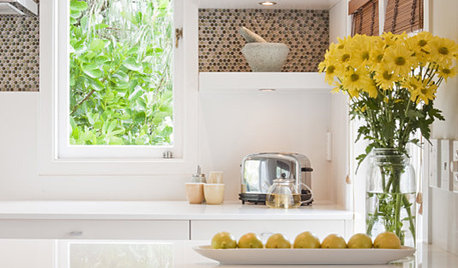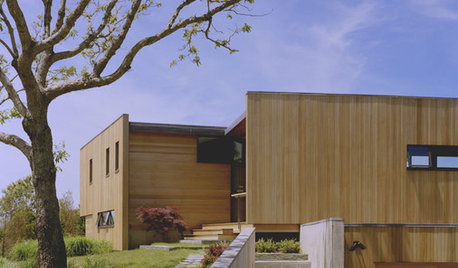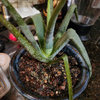What's happening to my lemon tree?
Owen Alexander
4 years ago
Featured Answer
Comments (11)
tapla (mid-Michigan, USDA z5b-6a)
4 years agoOwen Alexander thanked tapla (mid-Michigan, USDA z5b-6a)Owen Alexander
3 years agoRelated Discussions
Help. What's happening to my lemon trees?
Comments (10)The soil is very hard and I have to usually use a pick and a shovel to break through the layers when digging. When i was surface watering it would not seep through very well. The core of the root ball was about 1 foot below the surface when planted 3 years ago and I'm watering from 2-3 feet down until the water level rises back to the top because I was recommended the deep root stakes as it encourages root growth downwards where the water tends to remain longer during summer months and because the hard clay soil tends to spread water outwards rather than down like loose or sandy soil. I was told these trees need a lot of water but infrequently so I'm putting about 40 gallon worth per tree every month but I don't know how much is actually reaching the roots. I'll buy the chelated iron asap and dig to see soil mosture content 1-2ft deep. If it turns out to be over-watering can the trees survive and what can I do other than just wait before the next watering cycle?...See MoreHelp! What's going to happen to my Meyer Lemon tree?!
Comments (2)It should be fine. Just be sure you keep it watered well while it is reseating itself. In your area, that means at least once a day. You could make sure you check the soil pH once it is settled in and add whatever it needs. I am sure you are aware that it needs a pH around 5-6. Your garden soil, which he may have used, could be above that, so just try not to be too upset. I had 25 clematis chopped down with a weedeater by a new gardener. It's life. Things happen. My DH sprayed Round Up on my roses and killed more than 200. Things happen. Life goes on. This post was edited by patricia43 on Fri, Jun 6, 14 at 13:31...See MoreStrange happenings with lemon tree
Comments (26)If it squirrels which are eating your lemon I have them here around my yard not one not ten may be a thousand. They drove me out of my mind. They come at night and climb on my trees and destroy the fruit. They do not eat the whole fruit but they bite on it and injure it and it falls down. They eat everything figs, plum, cherry, peach and even blue berry. I could not believe it the blackberry bush has million thorns but it did not stop them. I tried everything cages (caught only two) I tried pp gun never worked. I hope I found the solution I adopted two Jack Russell Terriers that kind of dog is tiny in size ( about 10 pounds) but nothing scares him (he thinks he is 250 pounds) and hates squirrels. They make a lot of noise and chase squirrels. I can see the squirrels at the boundary of my yard beside the fence but scared to get into the yard I hope they still scared of my dogs. A breeder told me if my dogs catch a squirrel they will kill it. I hope it does not happen all I want that they leave my trees alone....See MoreS.O.S.! What is happening to my lemon tree?
Comments (14)I'm so bummed! And the closer I looked at it, I could see the webs and sap beads they leave behind. Grrr! It is on the main trunk and 2 of the 4 branches. I wonder if I can use our shower head to hose it off?? We have well water... It's 35 degrees out so it's not really ideal to hose it off outside... Thoughts? I have it in our living room where there are other plants, but the closest is 4 feet away (Poinsettia), the rest are about 12ft, and then on the other side of the room. I could always move it to the dining room where there are no plants, and it would get the same amount of light. I'll be cleaning it up in just a moment. Hopefully all ends well!...See Moretapla (mid-Michigan, USDA z5b-6a)
3 years agoOwen Alexander
3 years agotapla (mid-Michigan, USDA z5b-6a)
3 years agoMatt Barnett
3 years agoOwen Alexander
3 years agotapla (mid-Michigan, USDA z5b-6a)
3 years agoMatt Barnett
3 years agotapla (mid-Michigan, USDA z5b-6a)
3 years ago
Related Stories

GARDENING GUIDESHow to Keep Your Citrus Trees Well Fed and Healthy
Ripe for some citrus fertilizer know-how? This mini guide will help your lemon, orange and grapefruit trees flourish
Full Story
DECORATING GUIDESHave Lemons? Make a Decorative Statement
Add a splash of citrus for some midwinter color therapy
Full Story
GARDENING GUIDESGot Frost-Damaged Plants? How It Happens, and When and How to Prune
Crispy brown leaves are a sure sign that Jack Frost has been to your neighborhood
Full Story
YELLOWBrighten Up With Lemon Yellow
Get Inspired to Add a Little Sun to Your Springtime Decor
Full Story
EDIBLE GARDENSHow to Grow 10 Favorite Fruit Trees at Home
Plant a mini orchard in fall, winter or early spring to enjoy fresh-off-the-tree fruit the following year
Full Story
EDIBLE GARDENSWhy Grow Quince? For Beauty, Fragrance and Old-Time Flavor
Delightfully perfumed fruit and lovely spring blossoms make this apple and pear cousin worth a spot in the garden
Full Story
MOST POPULARA Magical Tree House Lights Up for Christmas
From the Most Popular file: An incredible tree house takes things up a notch for the holidays. See how it came to be
Full Story
GARDENING AND LANDSCAPINGOld School Green Design: Keep the Trees!
Trees in the landscape add a sense of place, connection to nature, shade — and great beauty
Full Story
HOMES AROUND THE WORLDMy Houzz: At Home With Nature Up in the Trees
This homeowner’s creative bungalow on the Australian coast has a bohemian air and a star-studded history
Full Story











Matt Barnett